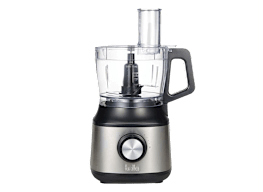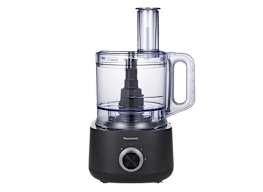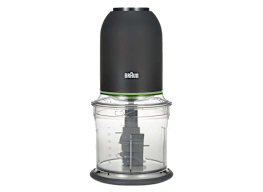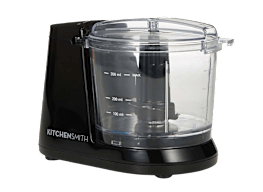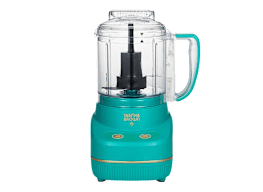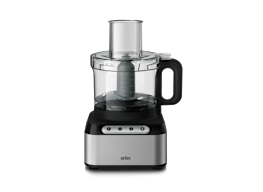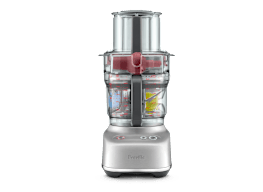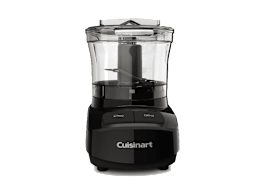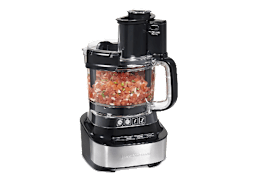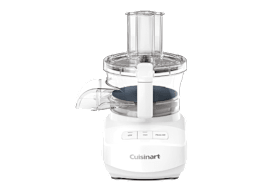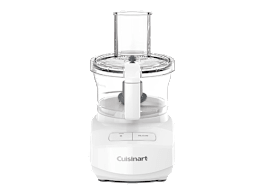
Food Processor & Chopper Buying Guide
Food processors and choppers spare you lots of time and energy when it comes to cooking tasks like slicing or chopping. They’re easy to use, too, even if you’re a butter-fingered novice in the kitchen.
The best food processors and choppers are like jacks-of-all-trades. They can chop veggies, grate cheese, slice potatoes, grind nuts, blend sauces, and even knead cookie dough. For small jobs, such as chopping basil or nuts, it’s best to go with a food chopper. For bigger tasks like making breakfast casseroles, the larger food processors provide more power, convenience, and versatility.
You can spend as little as $30 for a basic chopper and up to nearly $600 for a souped-up food processor. Some newer models are cordless and rechargeable, and some can work both as a blender and as a food processor. Our ratings for food processors and food choppers detail the features of each model and how they performed in our tests.
How We Test Food Processors and Choppers
In CR’s labs, we rate food processors and choppers on how well they perform a number of tasks.
For choppers, we test models on chopping onions and almonds, puréeing peas and carrots, and grating Parmesan cheese. We test food processors on grating Parmesan cheese, slicing celery and mushrooms, and shredding carrots and cheddar cheese. We also assess how noisy each model is when operating at its highest speed.
How to Pick a Food Processor or Chopper
Consider the following factors, which are listed in our ratings, when picking a food processor or chopper.
Capacity: Claimed food processor capacities typically range from about 7 to 16 cups, although actual volumes often vary by 1 or 2 cups. If you regularly cook for a crowd or like to prepare multiple batches of a recipe, you might appreciate a bigger processor with a capacity of, say, 11 to 16 cups. But they tend to cost more, sometimes weigh more, and hog counter space. A capacity of 7 cups or so is fine for most tasks.
Food choppers are smaller and hold only about 1 to 5 cups. They make more sense for small jobs, such as dicing half an onion or mincing a handful of parsley. Plus, they’re easier to clean.
Price: Lower-priced models we test tend to deliver subpar performance in at least one processing task. They also make quite a racket, whereas most higher-end models are quiet. That said, there are some food processors with a price under $100 that offer decent performance.
Food Processors vs. Food Choppers
Full-sized processors are usually more versatile, able to chop and slice foods and knead dough. Food choppers look like little food processors, but they’re designed to handle simple tasks, such as chopping half a cup of nuts or a couple of shallots. There are close to 70 food processors and food choppers to explore in CR’s exclusive ratings.
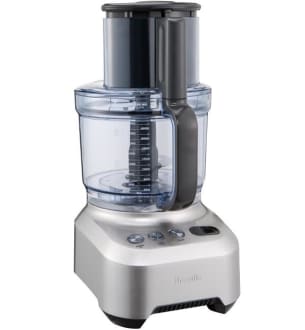
Food Processors
Most easily chop vegetables for soups or stews, slice salad fixings, and shred cheese for tacos. Some models can knead bread dough, but they’re generally more expensive.
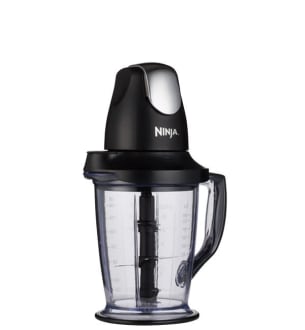
Food Choppers
Choppers, which are smaller, lighter, and less expensive, generally make quick work of cutting up small batches of nuts and herbs that would get lost in a food processor’s large bowl. They don’t have shredding and slicing blades.
Food Processor and Food Chopper Features
Food processors and food choppers are typically equipped with a clear plastic mixing bowl and lid, an S-shaped metal chopping blade (and sometimes a blunt blade for kneading dough), a plastic food pusher to safely prod food through the feed tube, and a safety lock. Here are additional features worth considering:
- 1
- / 7
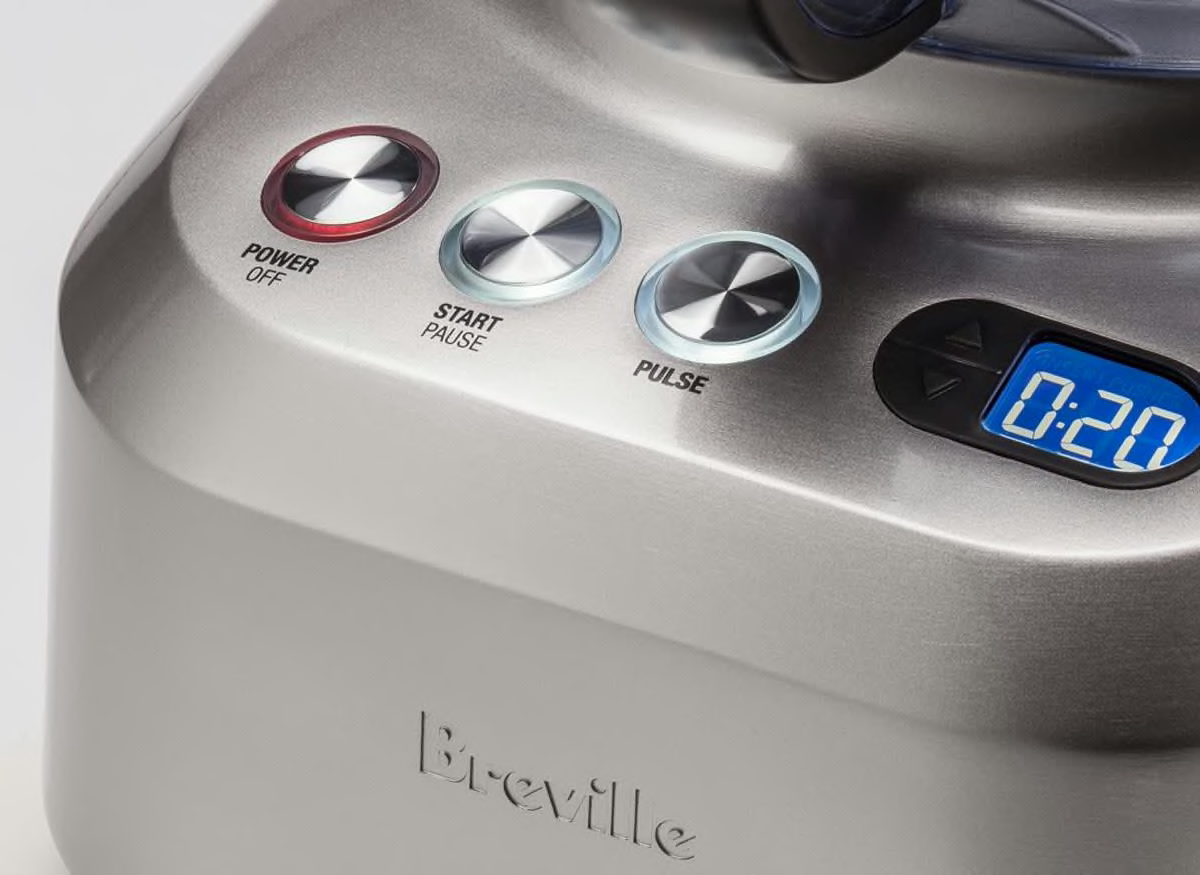
Speeds
Food processors typically have two settings: on/off and pulse. The latter setting runs the machine in brief bursts for more precise control. Choppers typically have one or two pulse settings: high and low. Those are all the speeds you really need.
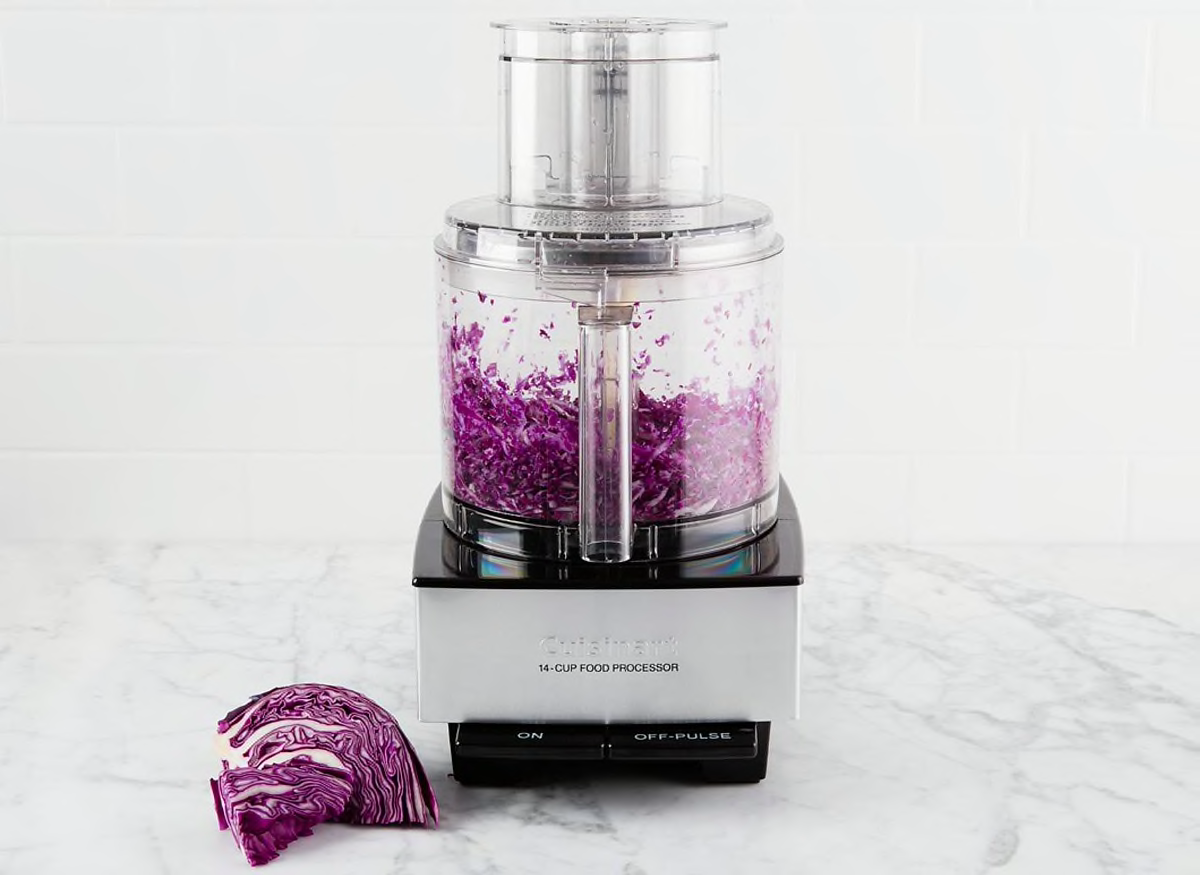
Multifunctional Accessories
A shredding and slicing disc is standard on full-sized processors. Some models come with a juicer attachment or interchangeable blades to handle a variety of jobs.
PHOTO: JASON WORRELL
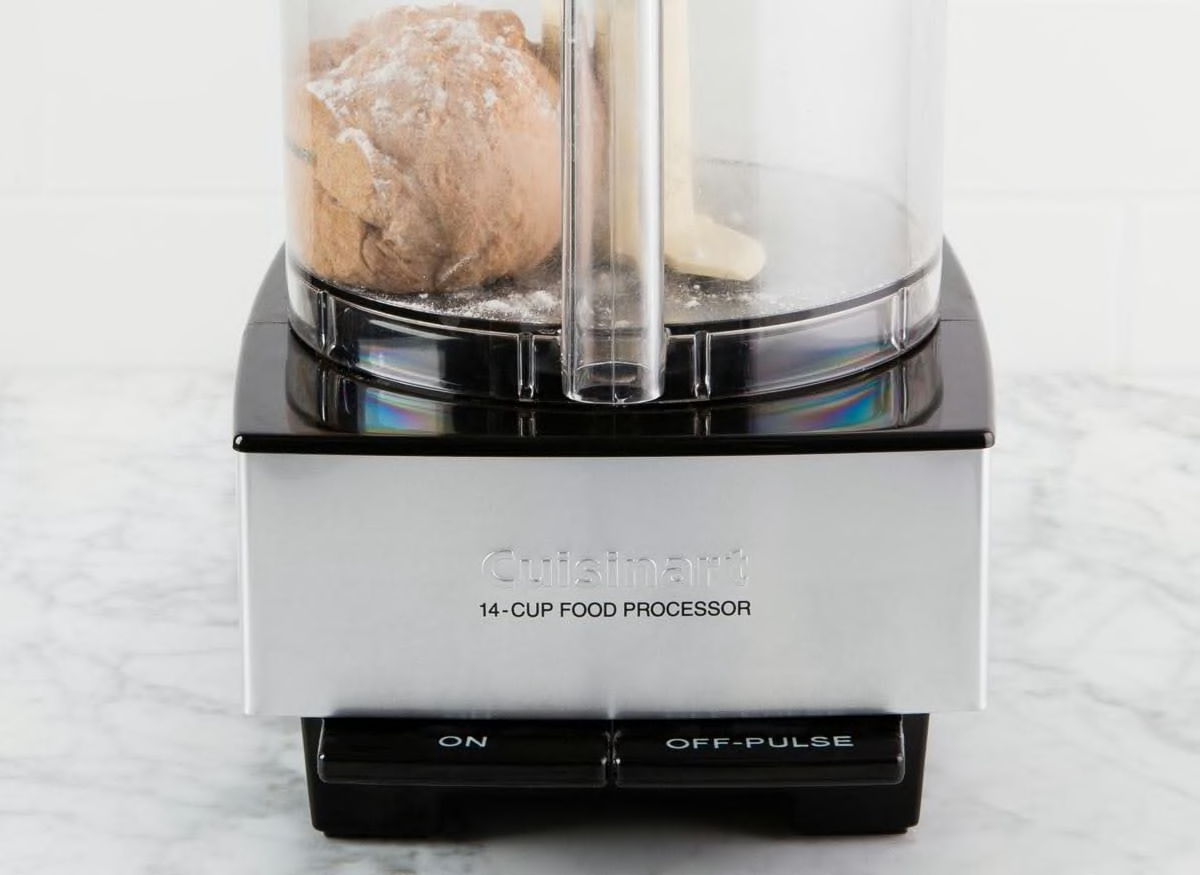
Dough Blade
This is a blunt blade that improves performance in kneading dough.
PHOTO: JASON WORRELL
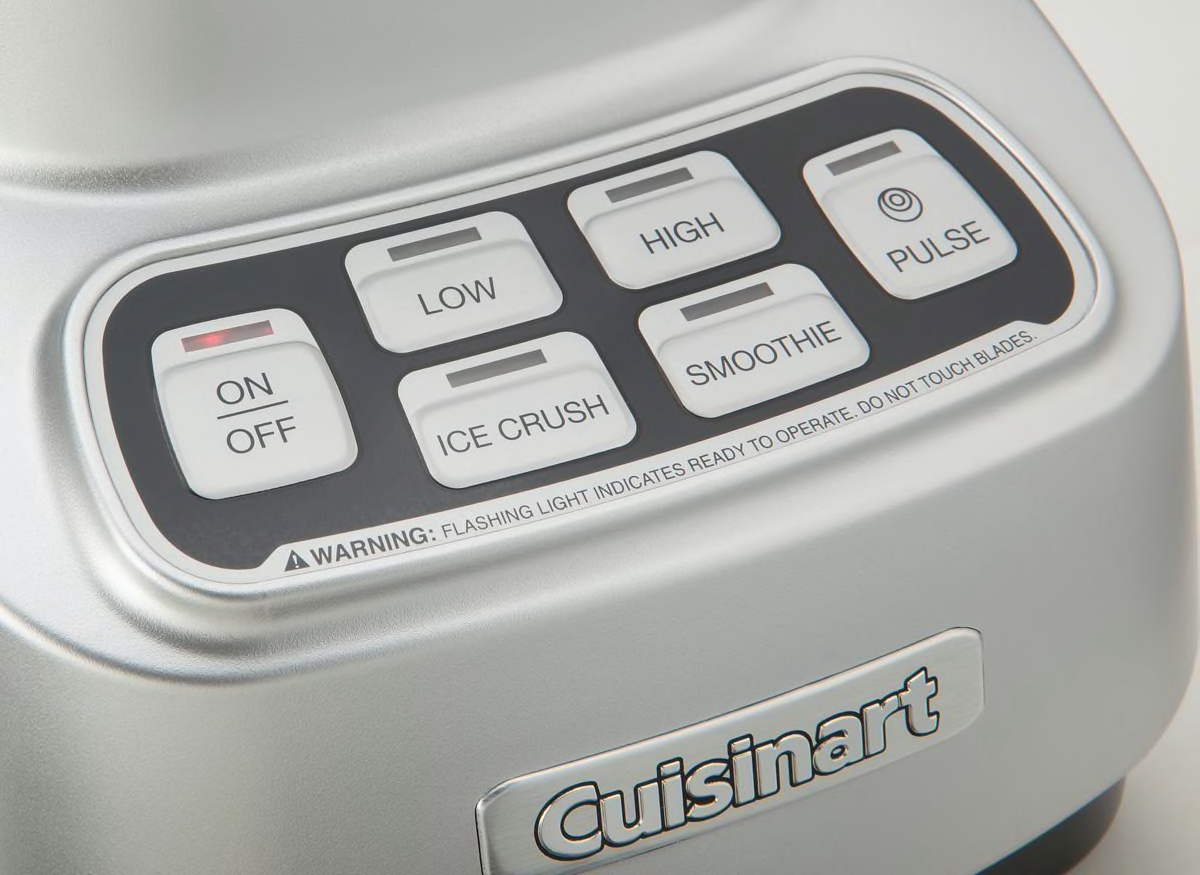
Touchpad Controls
Now a common feature, touchpads are easy to wipe clean.
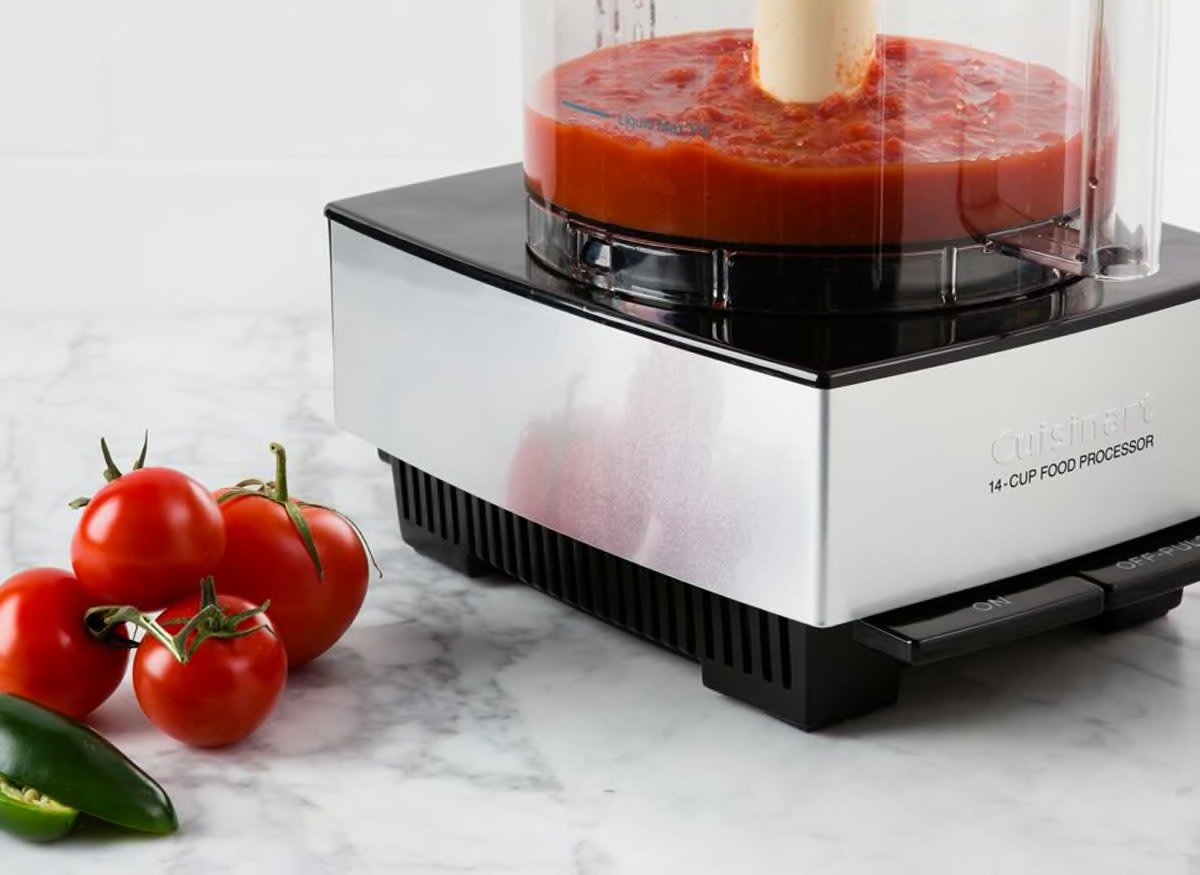
Liquid 'Max' Line
This line or marking on the mixing bowl shows how much liquid the processor can hold. It helps prevent overfilling, which can cause leaks.
PHOTO: JASON WORRELL
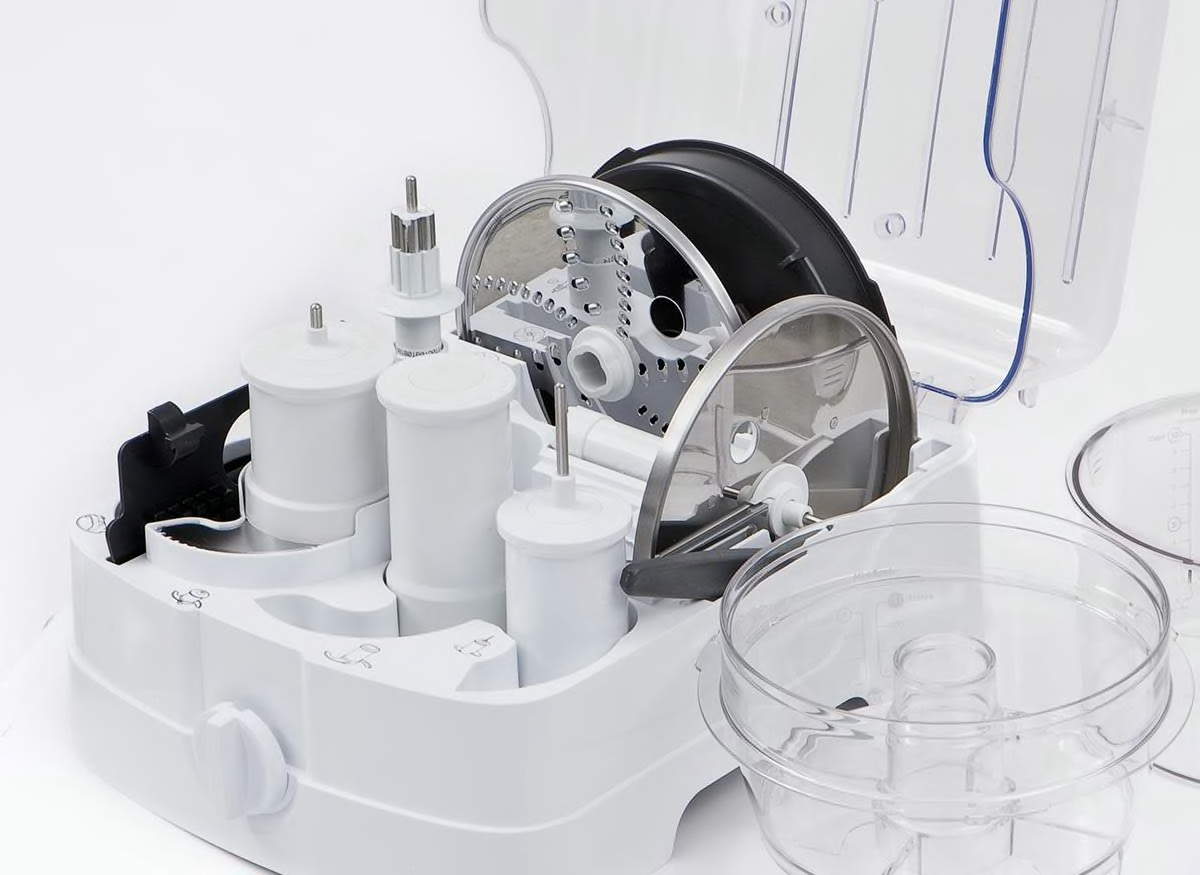
Storage Case
Some food processors include a storage case for storing blades and accessories. Many do not, even when models cost $200 or more.
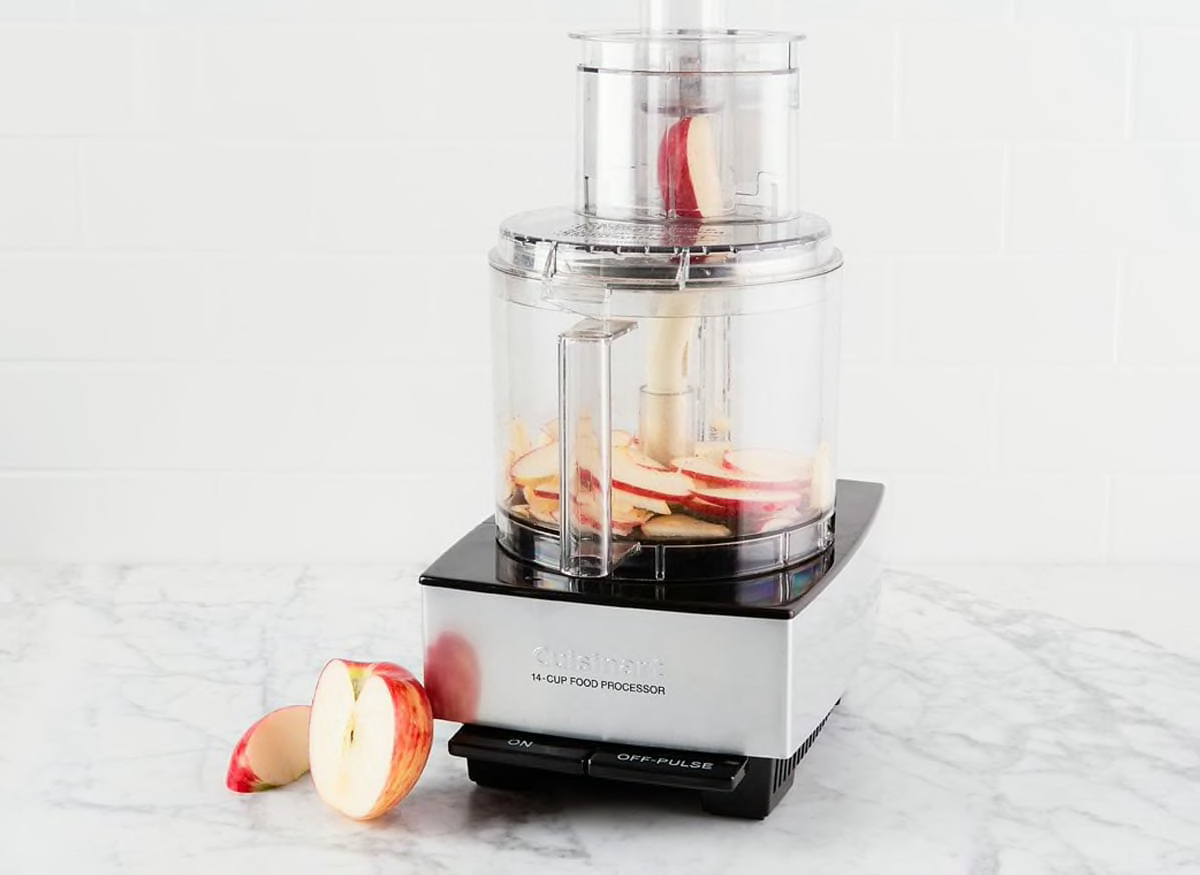
Feed Tube
A wide feed tube holds larger food items and saves you the trouble of cutting up potatoes, cucumbers, and other large items.
PHOTO: JASON WORRELL
Speeds
Food processors typically have two settings: on/off and pulse. The latter setting runs the machine in brief bursts for more precise control. Choppers typically have one or two pulse settings: high and low. Those are all the speeds you really need.
Multifunctional Accessories
A shredding and slicing disc is standard on full-sized processors. Some models come with a juicer attachment or interchangeable blades to handle a variety of jobs.
PHOTO: JASON WORRELL
Dough Blade
This is a blunt blade that improves performance in kneading dough.
PHOTO: JASON WORRELL
Touchpad Controls
Now a common feature, touchpads are easy to wipe clean.
Liquid 'Max' Line
This line or marking on the mixing bowl shows how much liquid the processor can hold. It helps prevent overfilling, which can cause leaks.
PHOTO: JASON WORRELL
Storage Case
Some food processors include a storage case for storing blades and accessories. Many do not, even when models cost $200 or more.
Feed Tube
A wide feed tube holds larger food items and saves you the trouble of cutting up potatoes, cucumbers, and other large items.
PHOTO: JASON WORRELL
Food Processor and Chopper Brands
CR’s ratings of close to 70 food processors and choppers include models from the following brands.
This is a major brand that makes models in the low-priced to midpriced range. They’re available at department stores, big-box retailers, and online.
Breville is a premium brand with high-end and midpriced models sold in specialty and department stores.
This company sells midrange to premium models. Some also function as blenders. They’re sold in department, specialty, and appliance stores, and online.
This brand offers low-priced to midpriced models available through department, appliance, and big-box stores, as well as online retailers.
This brand offers premium products. Some models come in multiple colors. KitchenAid food processors are sold in department, specialty, appliance, and big-box stores, and online.

















